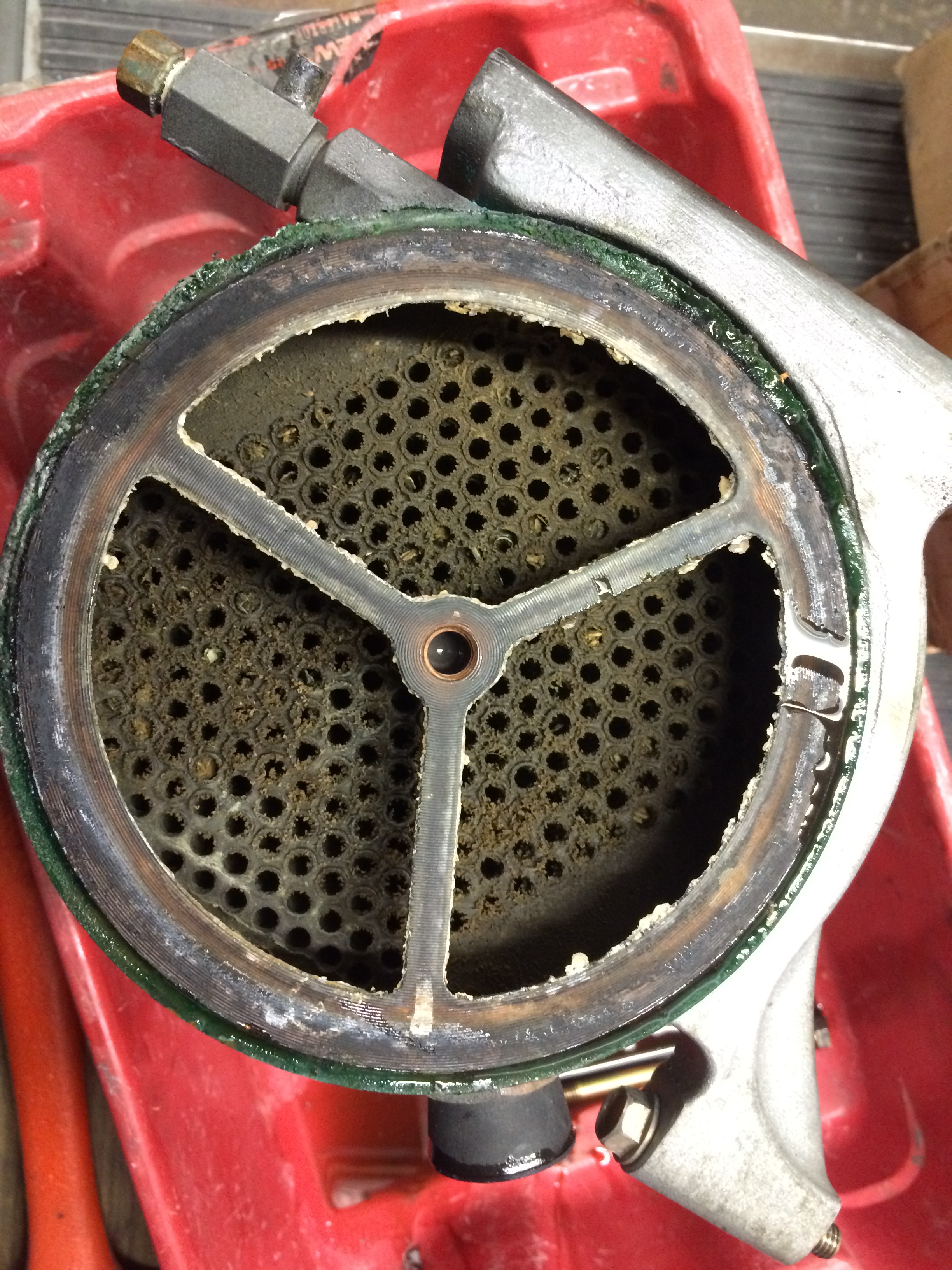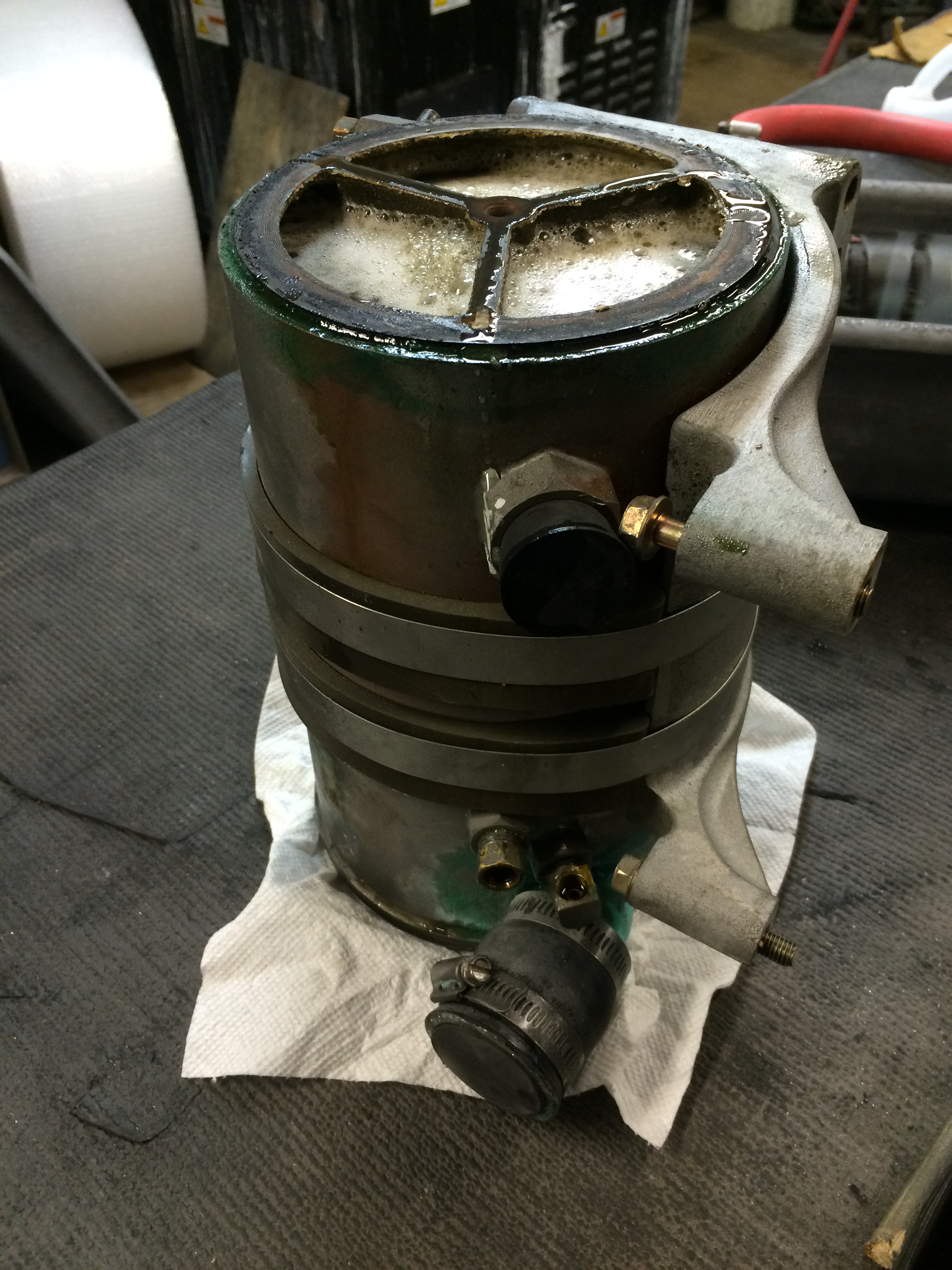When planning to do an oil cooler maintenance, it's best to do it at oil change time and do it after draing the oil but before refilling the crank case. Important! When removing the oil cooler, remove the brackets with it, to make it easier to aline the ports and attach the fittings when putting it back on. Once the oil cooler is on the bench finish draining the oil from it to keep things from getting too messy.I like to plug the oil ports with rubber stoppers while I am working on the water side. Remove the bolt holding the end cap on and carefully pry off the end cap. Be careful not to damage the cap or face on the oil cooler.
After 10 years of use in salt water, the oil cooler had accumulated some marine growth and had many tubes partially or mostly obstructed.
Using white vinegar to clean the cooler, I stood the cooler on it's end with a plug in the bottom water port. Poured in enought vinegar to fill the unit and just let it perculate for a couple of hours.
White vinegar is a mild acid that will not hurt the copper, but will interact with the foreign matter to dissolve it whether it is calcium deposits or soft growth.
Watch a short YouTube video of the vinegar working.
I let the vinegar sit for 1 - 2 hours and then rinsed it out with a garden hose. Below is the unit rinsed and ready for a borescope inspection.



